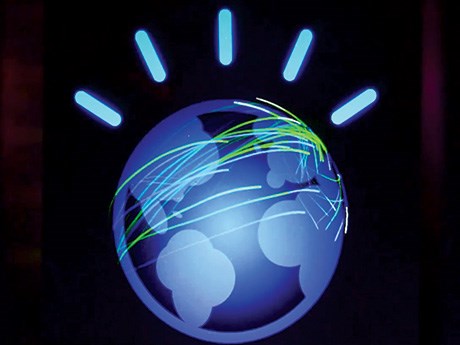Red Lake mine testing advanced decision support system
The same Watson that won the Jeopardy! IBM Challenge in 2011 could soon be coming to a mine near you, though its answers will be much different. IBM’s supercomputer will provide decision support to help Goldcorp’s Red Lake Complex analyze data and help pinpoint new orebodies.
“The project that we’re doing with Goldcorp is in the area of orebody modelling,” said Mark Fawcett, partner, IBM Global Services. “However, we definitely see Watson being able to impact all aspects from exploration to mine operation in terms of driving greater efficiency and productivity.”
According to an IBM Watson promotional video, Watson is “learning to think like a geologist.” Dariusz Piotrowski, global leader of cognitive and analytics development for natural resources at IBM, indicated that we shouldn’t take the “thinking” part too literally.
“It is certainly learning and it is analyzing the data. We are not making the claim that Watson is thinking like a human does,” Piotrowski said.
According to Piotrowski, Watson represents “cognitive computing” rather than artificial intelligence (AI). That’s an important distinction for IBM. The difference is that Watson analyzes and presents the data to a human to make the final decision, whereas the implication with AI is that it can act on its findings on its own without human input.
Fawcett stressed that humans play an integral role in the process. “We’re not replacing the geologists,” he said. “We’re making the geologist infinitely more powerful by being able to go through information… that they can use to make decisions.”
In other words, Watson is a decision support tool able to crunch massive amounts of data. It’s still up to the geologists to decide what to do with the answers it provides.
Watson offers several key advantages over human analysis, including speed, more accurate and more precise answers, and the removal of human bias. The system is able to crunch incredible amounts of data from varied sources quickly and efficiently, finding insights that the human mind could never reach on its own. The technology has already proven very effective in other industries, including health care, where Watson demonstrated an impressive ability to help diagnose complex cancers and suggest personalized treatment plans.
But just as machines – especially precision instruments – have to be calibrated, Watson will have to “learn” as it goes.
“I relate it to education,” Fawcett said. “As Watson comes into mining, it will be at a certain level. Then it’s going to go through those grade levels as it learns mining… It will become more and more sophisticated.”
Whether you call the process “learning” or not is mostly philosophical. Watson has shown that as it works in a certain area for a certain amount of time – say preparing for Jeopardy! or helping diagnose cancer – its answers have become more precise and more accurate over time. In humans, we call that progression learning.
No matter what you call it though, Luis Canepari, vice-president of technology at Goldcorp, calls it an opportunity to change the mining industry.
“I’m a believer in disrupting industries,” Canepari said.
When Goldcorp management first heard about Watson, they tried to figure out where this technology would offer the most opportunity.
“If I could pick one area where mining could be disruptive, it would be exploration,” Canepari said. “It’s very expensive. It’s probably the hardest area to have results, and it’s one of the areas that’s the most data intensive.”
Discovery costs for gold vary around the world, but at least one consultant, MineEx Consulting, claims that they doubled on average from 2005 to 2014 and will likely continue to rise. The average discovery costs for primary gold finds were US $31 per ounce in Canada, and US $71 per ounce in the United States, according to a MineEx report. Watson may help reduce those costs.
By how much though, nobody is quite sure. Canepari said Goldcorp isn’t setting any specific targets, calling the Watson experiment at Red Lake a “proof of concept” project.
“We would like to test the technology and see how we can work with it,” Canepari said. “At a minimum, if we can takeall that data… and structure it in a way that our geologists can be more efficient, that alone (makes it worthwhile).”
Canepari said that this technology could lead to sweeping changes throughout the industry – not to mention every aspect of human existence.
“Artificial intelligence could be used for so many other things,” Canepari said. He cited maintenance, property assessments before purchases, the milling process, and even improving the safety of mines as possible areas where Watson could help.
“Artificial intelligence can completely make a difference and significantly change the way we do business.”



